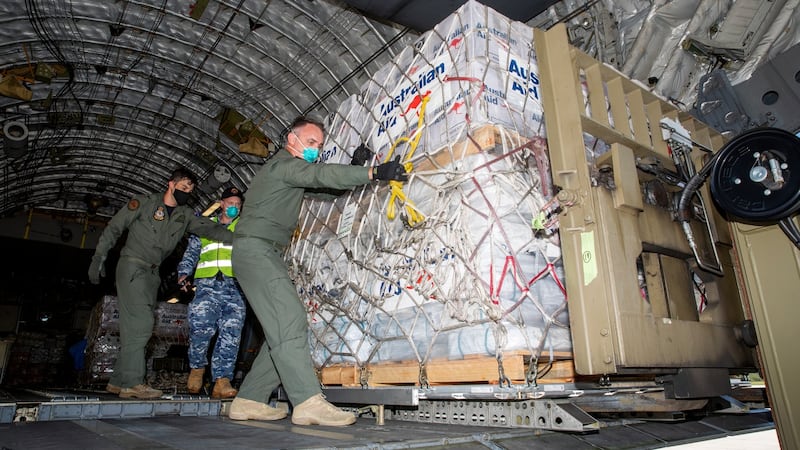Three flights from Australia carrying food, water, medical supplies and telecommunications equipment have landed in Tonga as the Pacific nation grapples with the aftermath of an underwater volcanic eruption and tsunami.
Zed Seselja, Australian minister for international development and the Pacific, said planes from other nations, including New Zealand and Japan, have also brought badly-needed aid to the Tongan people.
The first such aid arrived on Thursday, after the main airport runway was cleared of ash spewed when the nearby Hunga Tonga Hunga Ha’apai volcano erupted a week ago.
The explosion also set off a Pacific-wide tsunami that smashed boats in New Zealand and caused an oil spill as far away as Peru.
“Obviously it’s a very, very difficult time for the people of Tonga. The feedback on the ground again I got today is [that] many people [are] displaced,” Mr Seselja told reporters in Canberra.
Clean-up efforts are going smoothly, with the Tongan government and military officials working together, he said.
Ships from the US and UK are on their way, he added.

Also deployed was the HMAS Adelaide, an Australian navy ship, with helicopters on board as well as engineers and a 40-bed hospital. The ship can generate electricity and purify water.
A lack of clean water was a priority because supplies have been disrupted by layers of volcanic ash and salt water.
Red Cross teams on the ground reported widespread stagnant pools of salt water that were dumped by the tsunami, polluting the clean drinking water sources of tens of thousands of people, officials said.
Also on Saturday, the Japanese government said a Self-Defence Forces C-130 aircraft arrived in Tonga with three tonnes of drinking water.
That followed a Japanese military flight on Friday. Another plane is scheduled to depart on Sunday, carrying equipment for the ash clean-up, the defence ministry said.
Mr Seselja said one bit of good news is that casualties have been relatively limited, with three deaths confirmed so far.
Three of Tonga’s smaller islands suffered serious damage from tsunami waves. The majority of Tongans live on the main island of Tongatapu, where about 50 homes were destroyed and coastlines strewn with debris.
UN humanitarian officials reported that about 84,000 people – 80 per cent of Tonga’s population – have been affected by the eruption.
The tsunami severed the single fibre-optic cable that connects Tonga to the rest of the world, leaving many unable to connect with loved ones abroad.
Since then, satellite communication have improved and Tonga’s telecoms operator, Digicel, said it had been able to restore international call services to some areas. – AP











